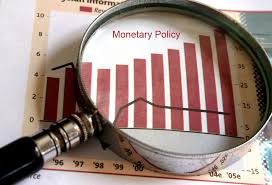A country’s money supply is defined as currency in circulation outside the banking system plus deposits held at banks.36 Banks play an important role in creating money, but so does the central bank. Banks create money by lending out deposits, hence their activities can affect the central bank. The traditional methods37 for controlling the money supply include the following
1. Open market operations: traditionally, this was done by buying and selling gilts (UK government Treasury bills) but since 1996, the Bank of England has also used gilt repos, i.e., a gilt sale and repurchase agreement – the Bank of England sells a gilt with an agreement to buy back the gilt at a specified date, at an agreed rate of interest.
2. Buying or selling securities in the financial market: this causes the monetary base (the quantity of notes and coins in circulation plus the quantity held by the banking system) to be affected. For example, if the Bank of England prints new money to purchase government securities (a Treasury bill or more recently a repo), then the monetary base will increase. Most of it will be deposited in the banking system, which the commercial banks, in turn, lend out.38 Or, if the bank sells government securities and the monetary base is reduced.
3. Reserve ratios: in some countries, banks are required to hold a certain fraction of deposits as cash reserves, and the central bank can influence the money supply. If the reserve ratio is raised, it means banks have to reduce their lending, that’s why the money supply encourage banks to reduce their amount of credit. In most western countries, the reserve is reduced. This method was standard procedure until the 1980s, and was designed to ratio is no longer used as a key monetary tool. For example, in the UK, the reserve ratio in 1971 was 12.5% but in 1981, the government abandoned its use as a means of controlling the growth of credit. It was replaced by a cash ratio, the sole purpose of which is to finance the operations of the Bank of England, and that is currently 0.15%39 of eligible liabilities for all credit UK institutions.
4. Discount rate: the rate charged to commercial banks when they want to borrow money from the central bank. Again, by raising the discount rate above the general market interest rate, it is more expensive for commercial banks to borrow in the event that withdrawals suddenly rise. The banks hold more cash in reserves to avoid the ‘ ‘ penalrate ’ ’ , which a gain reduces the money supply because it means fewer deposits a reloaned out.
Click here for government certification in Accounting, Banking & Finance





6 Comments. Leave new
Good effort!
Good explanation..!
keep it up.
Well explained.. Good Job!!
Money control is such an important factor in the economy of the nation 😀
Well researched topic 😀
The points were apt filled with relevent information 😀 so got to know much more about this side 😀
Keep it up
well done 🙂